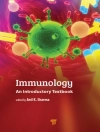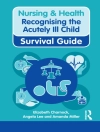This book describes the relationship of the skin with cardiovascular disease. It details the variety of genetic, autoimmune, metabolic and endocrine factors that link the two disciplines. Recognition of one sign or symptom in dermatology can lead to the investigation and discovery of an important related cardiac condition, the recognition of which is important to prevent cardiovascular complications. Similarly, a cardiac condition may be related to an underlying skin condition that requires treatment.
Genetic examples of such instances included within the book include: pseudoxanthoma elasticum, epidermolysis bullosa with desmosome defects and plectin defects; Marfan syndrome; Autoimmune conditions include vasculitis, sarcoidosis, lupus; metabolic conditions include insulin resistance, eruptive xanthomas with hypertriglyceridemias and elevated cholesterol; endocrine disorders include thyroid acropachy with atrial fibrillation; insulin resistance with coronary artery disease and psoriasis or hidradenitis suppurativa.
Skin and the Heart reviews the effects of genetic, autoimmune and endocrine diseases with connections between skin and heart. It is therefore a key reference for all practitioners and researchers working in both disciplines.
Innehållsförteckning
Preface.- I. Embriology.- 1. Embryology of the skin.- 2. Embryology of the heart.- II. Genetic diseases.- 3. Epidermolysis bullosa.- 4. Cutaneous Manifestations of Aortic Disease.- 5. Tuberous Sclerosis Complex: Skin and Heart: Pivotal Common and Early Signs.- 6. Incontinentia pigmenti.- 7. The Heart in Neurofibromatosis.- 8. Cardiocutaneous desmosomal disorders SEE II.2.- III. Inflammatory diseases.- 9. Lupus erythematosus and other collagen diseases.- 10. Vasculitis.- 11. Behçet’s Disease.- 12. Kawasaki disease.- IV. Infectious.- 13. COVID-19.- 14. Lyme disease.- 15. Syphillis.- 16. Viral conditions (varicella, congenital rubella).- V. Metabolic and endocrine diseases.- 17. Xanthomas and abnormalities of lipid metabolism and storage.- 18. Diabetes mellitus.- 19. Lysosomal Storage Disorders – Fabry Disease.- 20. Mastocytosis.- VI. Drug reaction.- 21. Cardiotoxic and skin rections inducing medication.- 22. Cardiovascular side effects of skin diseases treating medication.- 23. The importance of cardiac assessment in the era of biologic therapies for psoriasis.- VII. Erythoroderma (ex. High output cardiac failure – erythroderma, etc).- 24. Erythroderma and cardiac function.- VIII. Miscellaneous.- 25. Disorders of fluid regulation.- 26. Infantile hemangiomas and the heart.- 27. Erdheim Chester disease.- 28. Cardiac Implantable Device Related Complications.- Index.
Om författaren
Professor Carmen Salavastru is Head of the Paediatric Dermatology Department at the “Colentina” Clinical Hospital, “Carol Davila” University of Medicine and Pharmacy in Bucharest, Romania. With more than 20 years experience as a Consultant Dermatologist working with inpatients, she has experience in advanced management of severe drug reactions and acute skin failure. Since 2012, she has focused on paediatric dermatology field with an emphasize on genodermatoses and co-founded the Romanian National Programme for the Treatment of Rare Diseases – Epidermolysis Bullosa. Having eight years experience as a member of the Faculty of Physiology of the same University and a Ph D Degree on a topic connecting two medical specialties, she is a passionate advocate of Dermatology as a link to other medical fields.In addition to her medical qualifications, Dr. Salavastru holds a Masters in Health Systems management and is also involved in research on health economics and health related quality of life.
Professor Dedee Murrell is Chair of the Department of Dermatology at St George Hospital, University of NSW, in Sydney, Australia. She completed medical training at Cambridge and Oxford Universities, three years of internal medicine in the UK and USA, dermatology training at UNC-Chapel Hill, and fellowships in dermatopharmacology and cell biology in the USA. She focusses on the management of complex medical dermatology, including genetic and autoimmune blistering diseases. In addition to over 300 peer reviewed papers, she has edited several books, including “Blistering Diseases” with Springer in 2015 and is Co-Editor of the International Journal of Women’s Dermatology.
Dr James Otton is a Consultant Cardiologist at Liverpool Hospital, Sydney He is a clinical faculty member of the Victor Chang Cardiac Research Institute and a conjoint Senior Lecturer at UNSW, Sydney.. In addition to his medical qualifications he holds a Bachelor of Arts in philosophy, a Master of Biomedical engineering and a Ph D on the early detection of cardiovascular disease. He has received numerous research awards. Subspeciality interests include cardiovascular imaging, the assessment of coronary artery disease and cardio-oncology.












